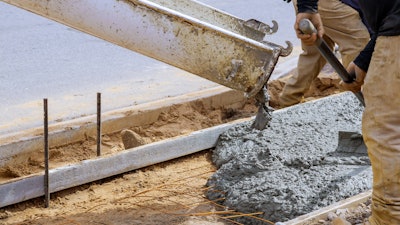
The construction industry is under increasing pressure to reduce its environmental footprint, and a significant focus has been placed on low-carbon concrete. Concrete is a vital material for infrastructure, but its environmental cost is high—primarily due to cement, which accounts for about 7-8% of global carbon dioxide (CO2) emissions. As both public and private sectors push for more sustainable building solutions, low-carbon concrete has emerged as a key player in reducing the carbon impact of construction.
Governments, developers, and environmental advocates alike are pushing for the adoption of greener alternatives to traditional concrete. This shift is not only to help meet regulatory requirements but also to recognize the construction sector's responsibility in mitigating climate change.
Adopting low-carbon concrete is essential for reducing the construction industry's overall carbon footprint.
As the demand for sustainable infrastructure rises, low-carbon concrete offers a pathway to balancing the need for durable, resilient materials with the urgency of reducing emissions. By incorporating innovative materials and techniques, the construction industry can take meaningful steps toward a more sustainable future without compromising the structural integrity of its projects.
Traditional concrete contains portland cement, the production of which is responsible for the bulk of CO2 emissions within the concrete industry. Cement manufacturing involves the calcination of limestone at very high temperatures, releasing large amounts of CO2. Globally, this process makes up a significant percentage of emissions, more than entire sectors. The shift towards low-carbon alternatives in concrete is not only desirable but also necessary to achieve global emissions reduction targets and make the construction industry more sustainable.
Strategies for Low-carbon Concrete
To address the pressing environmental concerns linked to concrete production, several innovative strategies have emerged to reduce the carbon footprint of this essential material. These strategies range from replacing traditional cement with lower-impact alternatives to implementing advanced technologies that capture and store CO2 within the concrete itself. Each approach aims to strike a balance between reducing emissions and maintaining the strength and durability that concrete is known for.
By adopting a mix of proven methods and cutting-edge technologies, the construction industry can significantly lower its environmental impact. These solutions can help reduce the carbon intensity of concrete and push the industry toward a future where sustainability and structural integrity coexist. As the global demand for sustainable building materials grows, these low-carbon concrete strategies pave the way for greener, more resilient infrastructure projects. There are several innovative strategies to lower the carbon footprint of concrete production while maintaining its strength and durability. These include:
- Supplementary Cementitious Materials (SCMs): One of the most common ways to reduce emissions from concrete is by replacing a portion of the portland cement with SCMs. These materials, such as fly ash (a byproduct of coal combustion), slag (from steel production), and silica fume, are industrial byproducts that can substitute a significant amount of the cement in the mix. The use of SCMs can reduce the carbon footprint of concrete by up to 40-50% without compromising the material's performance. SCMs also enhance the durability of concrete, providing an additional advantage for long-term sustainability.
- Alternative binders: Newer alternative binders like geopolymers and calcium sulfoaluminate are gaining attention as alternatives to portland cement due to their lower emissions. Unlike traditional cement, these binders are made from industrial byproducts and can be produced at much lower temperatures, significantly reducing the energy required and the CO2 released during production. While still in the early stages of widespread adoption, these alternatives offer a promising path to decarbonizing concrete production.
- Carbon capture and mineralization: Technologies that capture and store CO2 in concrete are another exciting development in the field. Companies like CarbonCure are pioneering methods to inject CO2 into the concrete mix, where it reacts with calcium to form calcium carbonate. This process not only locks carbon into the concrete but also strengthens the material. As a result, it provides an effective way to sequester CO2 while improving concrete's structural properties.
- Recycled aggregates: Using recycled aggregates from demolished concrete or construction waste reduces the need for virgin materials and lowers the carbon impact of producing new concrete. This approach also aligns with broader sustainability practices by promoting the reuse of materials that would otherwise contribute to landfill waste. By incorporating recycled aggregates into the mix, construction projects can significantly lower their environmental footprint while maintaining the strength and durability of the concrete.
- Optimized mix designs: Optimizing concrete mix designs is another effective strategy for reducing emissions. By carefully adjusting the proportions of ingredients, such as water, cement, and aggregates, engineers can minimize the amount of cement used without compromising the strength or durability of the material. This optimization not only cuts down on CO2 emissions but also reduces costs, making low-carbon concrete a more viable option for large-scale projects.
- Limestone Calcined Clay Cement: Limestone Calcined Clay Cement (LC3) is an innovative low-carbon cement that significantly reduces CO2 emissions. By substituting a portion of clinker with calcined clay and limestone, LC3 can achieve a much lower carbon footprint than traditional portland cement. India, in particular, has been a leader in the adoption of LC3, thanks to its abundant resources of limestone and clay. However, the availability of LC3 is still limited regionally, which affects its widespread use.
- Photocatalytic properties: Incorporating materials like titanium dioxide (TiO2) into concrete can enhance its sustainability by improving air quality around buildings. TiO2 has photocatalytic properties, which means it can break down pollutants in the air when exposed to sunlight. By integrating TiO2 into concrete, the material can help reduce air pollution in urban environments, making it a valuable tool for sustainable city planning. This innovation also enhances the functionality of buildings by promoting cleaner air.
The Path Forward
By adopting a mix of proven methods and cutting-edge technologies, the construction industry can significantly lower its environmental impact.
Adopting low-carbon concrete is essential for reducing the construction industry's overall carbon footprint. However, challenges remain, particularly in scaling up these innovations and making them cost-effective across global markets. Many of the technologies and materials discussed above are still in their early stages, and widespread adoption will require more investment, policy support, and awareness within the construction sector.
Despite these challenges, low-carbon concrete’s potential to drive sustainability in construction is undeniable. The combination of SCMs, alternative binders, carbon capture technologies, and optimized mix designs provides a powerful toolkit for reducing emissions while maintaining the performance of concrete. As the awareness about low-impact building materials continues to grow, low-carbon concrete will play a pivotal role in shaping the future of construction.
Low-carbon concrete represents the future of sustainable building materials. With its ability to significantly reduce CO2 emissions, this innovative approach is already making a difference in the construction industry. While there are still hurdles to overcome regarding scalability and cost, the potential for low-carbon concrete to revolutionize construction is evident. By embracing these technologies and strategies, the industry can take meaningful steps toward reducing its environmental impact and contributing to a more sustainable future.


















